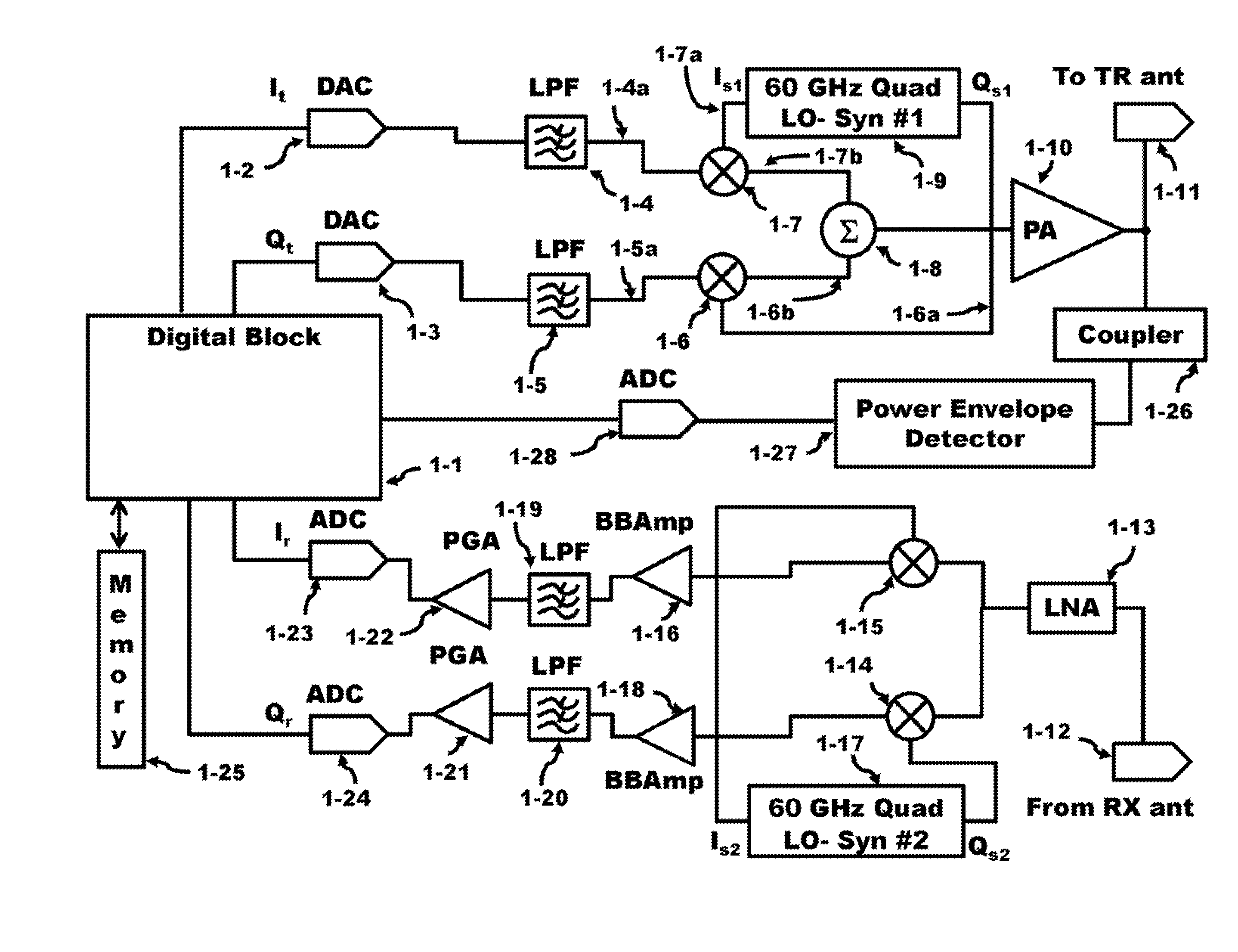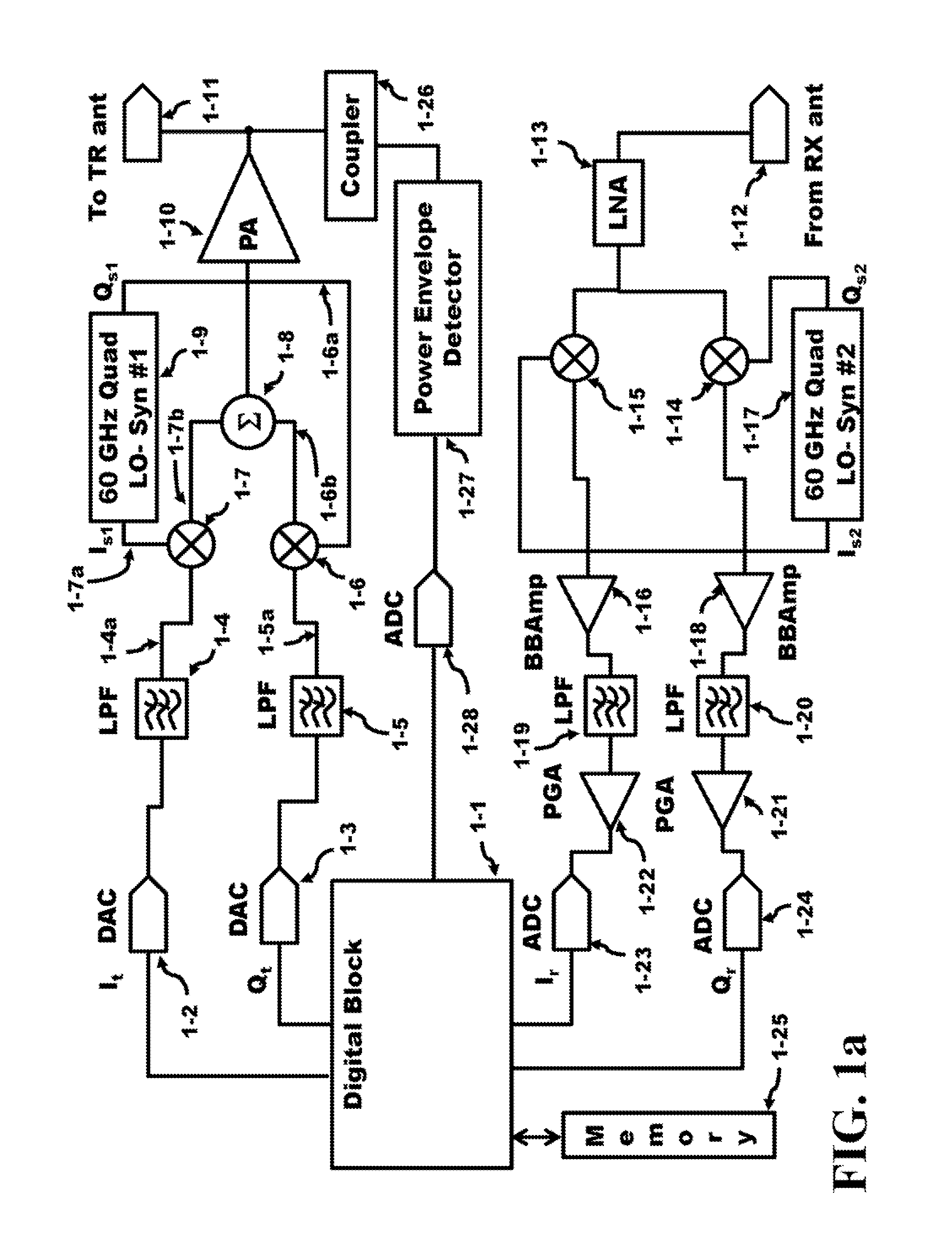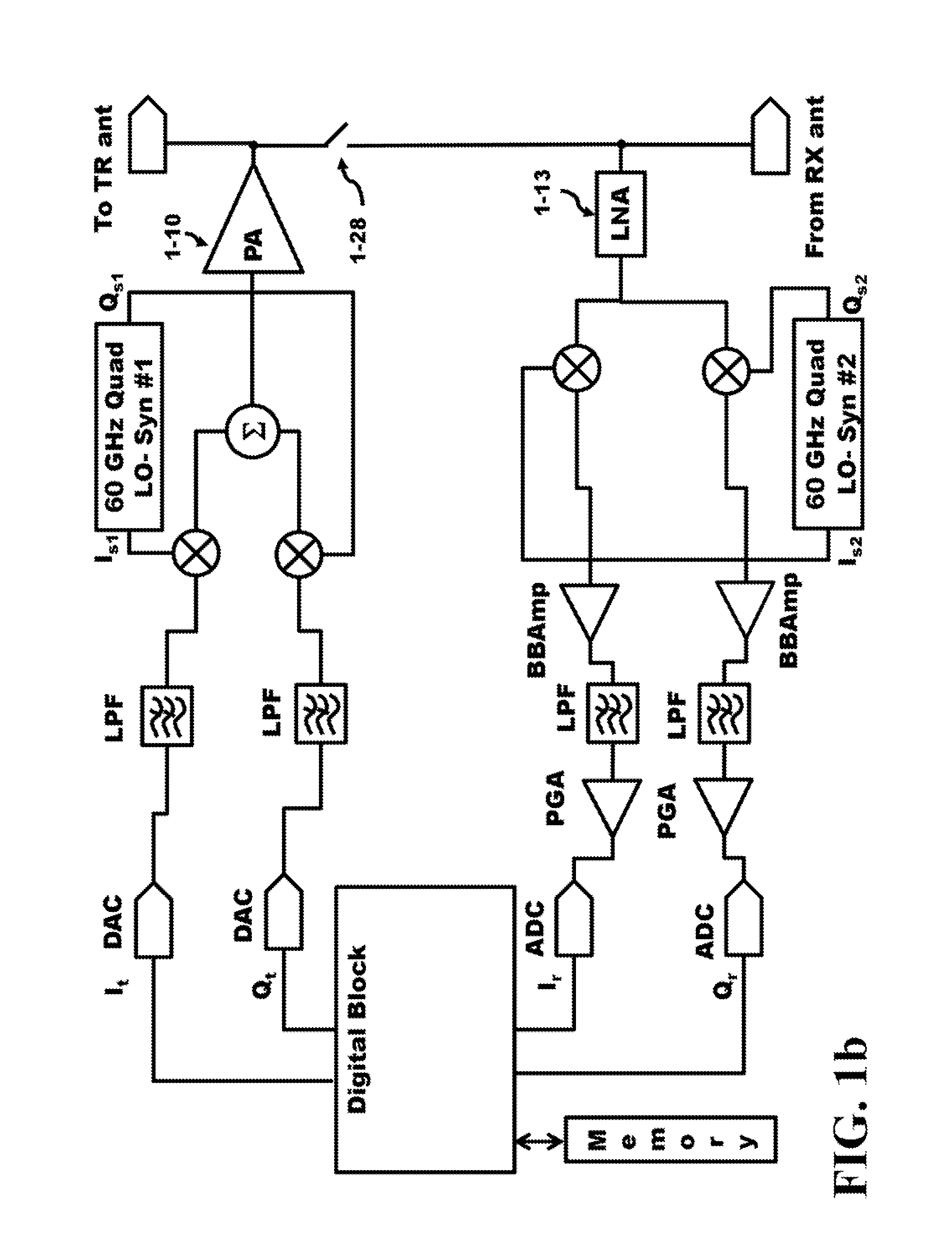Method and Apparatus of Transceiver Calibration Using Substrate Coupling
a technology of substrate coupling and transceiver, which is applied in the direction of electrical apparatus, digital transmission, transmission, etc., can solve the problems achieve the effects of reducing the sensitivity of the receiver, minimizing this coupling or loopback coupling, and improving the performance of the transceiver
- Summary
- Abstract
- Description
- Claims
- Application Information
AI Technical Summary
Benefits of technology
Problems solved by technology
Method used
Image
Examples
Embodiment Construction
[0044]FIG. 1a illustrates a transceiver coupled to a digital block and provides I / Q signals for the RF transmit chain which couples to the transmit antenna 1-11. Starting from the digital block 1-1, the It digital signal is applied to the DAC 1-2 input while the Qt digital signal is applied to the input of DAC 1-3. The I and Q signals after the DAC are analog at this point and, ideally, represent differential signals that are 90° out of phase or orthogonal to each other where the amplitude of both signals are equal. These I and Q signals are then low pass filtered by the LPF 1-4 and LPF 1-5, respectively, to a bandwidth of about 900 MHz. In addition, all single lines coupling (or interconnecting) signals between analog blocks are in fact differential lines, unless noted otherwise. These differential lines are illustrated as a single line to simplify the diagram and when the single line is shown, it is understood that the line and the signal it carries represents a differential signa...
PUM
 Login to View More
Login to View More Abstract
Description
Claims
Application Information
 Login to View More
Login to View More - R&D
- Intellectual Property
- Life Sciences
- Materials
- Tech Scout
- Unparalleled Data Quality
- Higher Quality Content
- 60% Fewer Hallucinations
Browse by: Latest US Patents, China's latest patents, Technical Efficacy Thesaurus, Application Domain, Technology Topic, Popular Technical Reports.
© 2025 PatSnap. All rights reserved.Legal|Privacy policy|Modern Slavery Act Transparency Statement|Sitemap|About US| Contact US: help@patsnap.com



